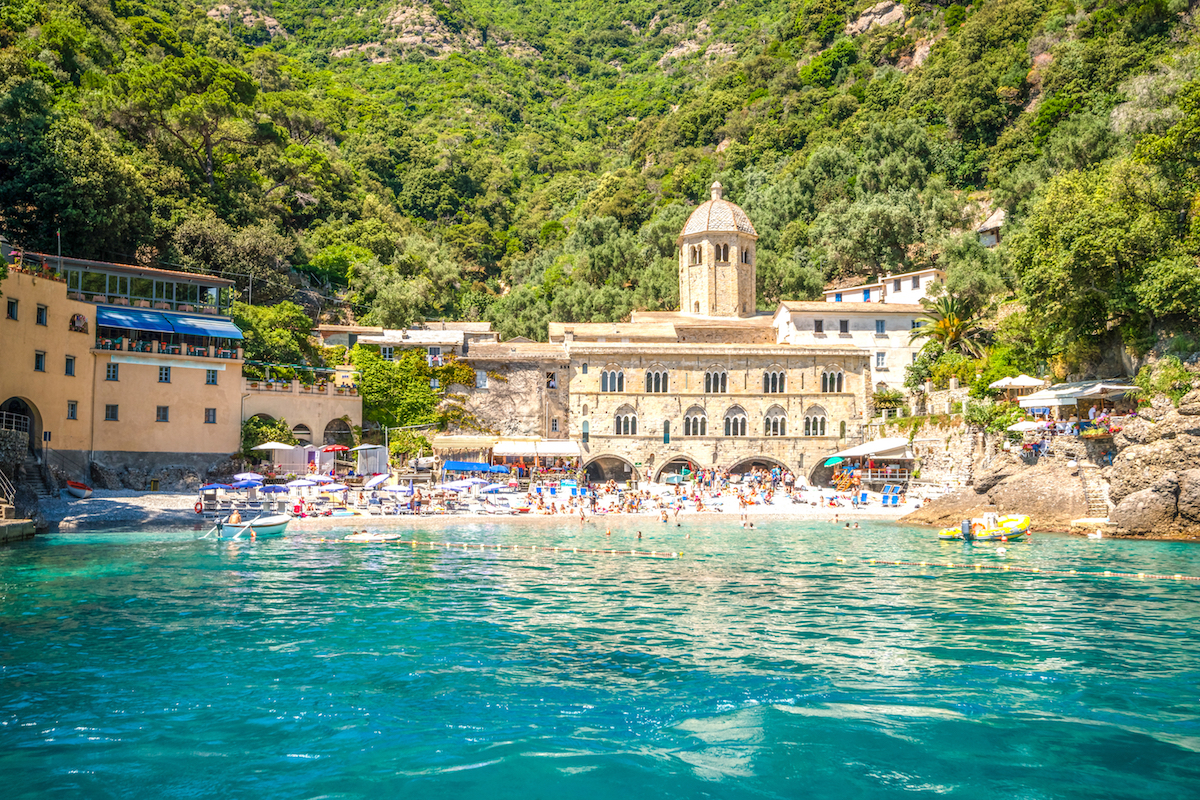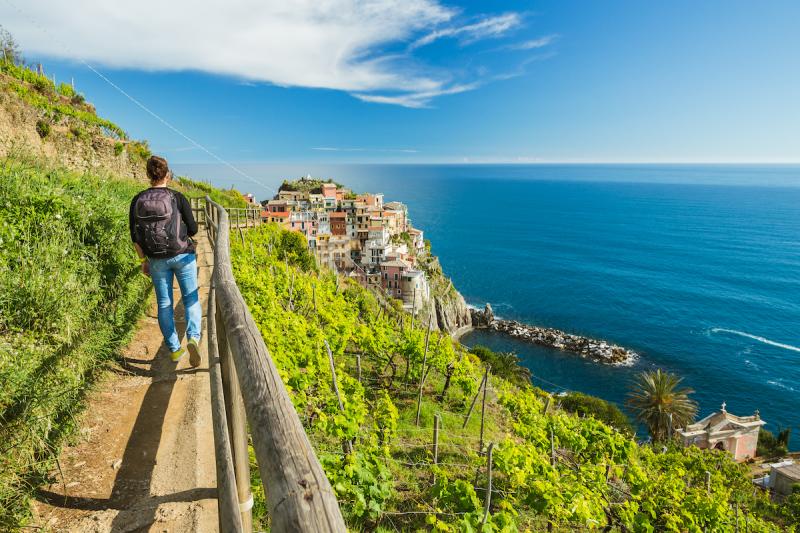Liguria is best known for the Cinque Terre, the glamorous jet setters in Portofino, and as a popular weekend respite for hot and bothered Milanesi who flock to its crystal clear shores looking to escape the sticky confines of the city during the summer months.
But Liguria's charms don't stop at sun-kissed beaches and turquoise waters. Flanked by the Ligurian Alps and Apennines mountain ranges, it’s the perfect hiking spot during the low tourism season. As snow starts to blanket the Alps, Liguria offers sweeping views and salty air, absent of summer crowds.
One of the best ways to experience the landscape is along the region’s many coastal paths. Here are three winter hikes to soak up the scenery like a local.
The Cinque Terre in calmer months

Okay, these five colorful fishing villages aren't exactly a secret, to say the least. The warm weather crowds speak for themselves. But in winter, you may have portions of the trails to yourself.
Step back to a time when the towns were only accessible by foot or boat. Follow the classic Sentiero Azzurro (Blue Path) between the villages to get a sense of the way of life and isolation that the areas endured until they were united by train in the late 1800s. Although the entire path isn’t currently accessible due to closures, you can visit all of the villages by taking the railway that cuts through the cliffs, which was recently ranked as one of the most beautiful and popular train routes in Europe.
Temperatures are mild and often sunny, so expect to sweat on some of the steeper uphills that take you high above the villages. Your effort will be rewarded with views across the glittering Mediterranean.
Shady woodland, olive terraces, citrus groves, and vineyards await as you follow the rugged trail with the murmuring sound of the sea swirling far below. With fewer hikers on the trail, it’s easier to tune into the surrounding sounds, from the trickle of small streams to chirping birds and buzzing bees. There are plenty of information boards to delve into the local history, geology, and ecology of the area.
The entire path is around 12 km (7.5 miles), and there are handrails to help out on the more strenuous sections. Currently, you can only walk between Monterosso-Vernazza-Corniglia; generally, each year from early November until late March, the trails are free, with no need to purchase the Cinque Terre Card access ticket. If in doubt, check the tourist information point at the train station in Monterosso for updates before setting off.
Punta Manara

Head down the coast to Sestri Levante for a short hike to Punta Manara. Explore the cobbled streets of Sestri Levante, grab an espresso at one of the local bars, and stock up on focaccia before setting off from Vico del Bottone, where Salita alla Mandrella takes you high over the town.
Here the path rises relatively quickly along a crêuze, a typical narrow Ligurian street, and unfurls into a footpath passing villas and olive groves. Follow the signs for Torre di Punta Manara to reach the tip of the promontory.
Walk through shady deciduous woodland and along sandy paths through pine forests, Mediterranean shrubs, and strawberry trees with their blooming red fruit. There are a couple of steep and rocky parts that require a bit more effort, but the path is mostly easy going and the views over Sestri Levante and the neverending Mediterranean Sea make up for it.
There are plenty of park benches to rest along the way for a pause to admire the views or enjoy a picnic lunch. Once near the top, a steep set of stairs with a handrail take you up to the promontory’s tip, where you’ll be greeted with uninterrupted views of the surrounding coastline.
Take the same path back, or follow a loop route taking you across the top of the promontory. The town is easy to reach by car or train, with connections to both Genoa and La Spezia, and the station is within easy walking distance of the old town and trail.
Camogli to Portofino

Perfect for adventure seekers, this trail follows a rugged cliffside route via the beautiful San Fruttuoso bay, with a small section that uses safety chains to help you scramble over the rocks. A head for heights is a must, although there are alternative routes through the park for easier options.
Start from Camogli following the path marked by two red dots that rises steeply out of the village, bringing you to San Rocco di Camogli, a small town offering panoramic views over the aptly named Golfo Paradiso (Paradise Gulf).
Wander through old hamlets into cool mixed woodland, and along the exposed clifftops. You’ll see remnants of World War II bunkers looking out to sea, views over the wild landscape of the Portofino Natural Regional Park, and the turquoise waters of the marine reserve below as the path clings to the cliff edge.
Stop off in San Fruttuoso to relax on the beach, and if it’s warm enough, go for a paddle in the sea. Explore Sanfruttuoso abbey before continuing toward Portofino for more spectacular lookout points and photo ops.
The hike concludes over the hills of Portofino, through olive groves and past villas, before winding down a steep set of steps. Explore the town, head up to the lighthouse for more views sure to stop you in your tracks, or take a well-deserved break in one of the bars or restaurants. Walk the seaside path or hop on a bus to Santa Margherita where a train will take you back to Camogli in minutes.
If you go
Each of these hiking routes is easy to reach by train with connections from Genoa Piazza Principe or Genoa Brignole train stations. Parking is limited in most of the towns, particularly in the Cinque Terre where there is little to no car access.
Liguria tends to be mild all year round, with some beautiful sunny days during the Autumn, Winter, and Spring. However, it’s best not to try some of these walks immediately after it’s rained due to slippery conditions and potential landslides.








